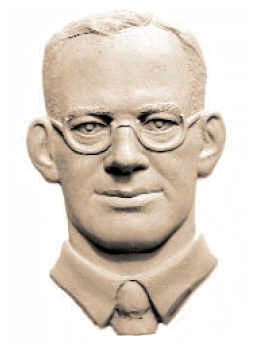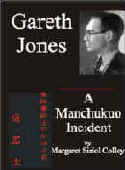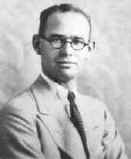The
Western Mail July 17th 1933
Craftsmen
of Wales
DANIEL
RHYDDERCH OF ABERLOCH
Family’s
300 Years Reign in Hammer Mill
A
DYING RURAL INDUSTRY
By GARETH JONES
The
hayfields were full of scent and the foxgloves were tall and red by the roadside
as I went from Carmarthen past Merlin’s Hill, turning up by Nantgaredig, on my
pilgrimage to Daniel Rhydderch owner of the hammer mill at Abergorlech.
Passing
farms and tiny villages, which bad been newly-whitewashed and. looked
dazzlingly, clean in the July sun and leaving one mill, Felingwm, which the
General Post Office disgraces by anglicising into Velingwm, I reached Bredhfa,
in the Cothi Valley.
My
thoughts had been carried back to the sombre Puritanical Wales of the nineteenth
century when I saw the simple chapel of Horeb. Not far from the turning to
Gwernogle, where the memory of Lewis Glyn Cothi, bard and philosopher, is still
revered, a squat, long-backed corgi turned his brown head towards me without
barking, and I knew that I was in the region of a real Welsh breed of dogs.
Marged
Lewis.
Near
the bridge at Nant-y-ffin I found the mill and, entering it, met old Marged
Lewis, a type of the Wales of yesterday. In Welsh she told the history of
her factory, how her father took it on in 1844, and how after his death she and
her sister managed. the, factory until three years ago.
But
her sister died two years ago, and life in the silent, empty mill, where the
wheel has stopped, where there is no sound of spinning, and where the only signs
of existence are the dripping of water from the mill-stream, and the clatter of
Marged’s feet as she potters about, is sad and lonely.
She
dreams of the old days, when the mills of West Wales were working busily, when
the farmers brought their wool, down from the hills, exchanging not only goods
and coin, but the gossip of the countryside, the points of their sheep-dogs, the
text and the “hwyl” of last Sunday’s sermon, and. the events of the last
fair.
That
is the world in which Marged has lived, and it is a world fast disappearing
around her. She says, “It is very lonely now. The mills are shut
and we can do nothing. How much better it was in the old days when we
worked at home! The fine old Welsh days are over, when we used to make
everything ourselves. Now those English do it all. Is it not a shame
that we allow the English, to do it!”
Big
Water Wheel
Her
factory was big and full of machinery, such as one would not expect in that
quiet wooded valley. The water wheel which once provided the power was one
of the largest I have seen. Marged climbed up the wooden ladder to the
upper room in spite of her age and showed the scene of former activity, when
Wales made her own flannel and tweed.
“Peidiwch
cwympo,” the old lady shouted to me, as I descended and said good-bye to this
sturdy character of the Wales which is disappearing. I wondered, as we
went farther along the Cothi Valley, what Daniel Rhydderch would be like.
I had heard of him and of his work and how he was carrying on his old “tucking
mill” in the same was as his ancestors before him.
The
surrounding country, with its woodlands, its rural quiet, the stream, and the
which silhouetted some ancient weather beaten trees ...
This
portion is lost. and will be replaced later
...mill
his cloth, his language, has that touch of genuineness and of simplicity which
shows that there is no alien influence to mar the unity of his character.
Even the baskets in his mill are made on a farm.
The
Cauldron
Before
we enter his “pandy,” or ‘tucking mill,” we notice two cauldrons on a
large covered stove, under one of which a fire is burning. Their purpose,
we learn, is for dyeing the cloth. Inside we see the hammers, but the
river is dry, and therefore they are not working, although there is much work on
hand, waiting for the river to swell again and for the hammers to beat and
shrink the cloth. The mill is used for “tucking,” that is, for driving
the fibre of the cloth closer together, that is, for shrinking both in length
and width, the Welsh for which is “pannu” and “brethyn.”
The
wool is spun in the factory, for instance, in Llangadock or in Llanllwni, and
cloth is brought to Mr. Rhydderch for finishing. He also presses and dyes,
and sometimes he makes the cloth ready for the tailor. In a “tucking
mill,” such as Mr. Rhydderch’s, the cloth is shrunk both in width and
length, whereas in a “fulling mill” it is shrunk in width alone.
From
the mill Mr. Rhydderch takes us to his house, called the “Pandy,” and shows
some of the cloth which he has made. And what cloth it is! Thick and
solid, it could, one imagines, be taken through torrential rains, be seized and
shaken by all the dogs in the Cothi Valley, and then return to Abergorlech as if
it had just come out of the “pandy” and last for many a long year.
A
Fine Quilt
But
Mr. Daniel Rhydderch is not the only craftsman in the house, for his sister,
Miss Mary Rhydderch, is one of the best quilters in Great Britain and her fine
work has been shown in the Rural Industries Exhibition in London. The
judge in the Rural Industries Bureau wrote of the quilt which she stretches
before our admiring eyes: “A fine quilt and very handsome. The design is
good and beautifully even.” Although there were quilts submitted’ from
every county in Great Britain, Miss Rhydderch’s was one of the best.
On
the wall hangs a good old Welsh sampler, which, in a variety of colours, with
green and red preponderating, depicting Eve taking the apple, is also the work
of Miss Rhydderch. The making of samplers is another Welsh craft which
shows skill and patience.
As
we leave the cottage I notice brown yarn stretched drying in the sun, and Mr.
Rhydderch tells me that he has just been dyeing it. But he does not make
the cloth through all the processes. “The weaver used to make the cloth
and bring it here for tucking,” he explains.
“And
are there still weavers left?” I ask. “Yes, there is one ‘who still
does a little work and that is James Davies, Cothi Valley.”
The
Weaver’s Lament
I
go up the valley to look for the weaver. James Davies was in the fields,
making hay.
“I
do very little work now,’ he told me in Welsh. “The motors and the
vans come round the farms and sell cloth. So it does not pay any
longer. I still do a little in the winter, but nobody weaves any more
around here.”
He
told how the farmers used to bring him the wool and how he used to make it into
cloth, some of which he used to take to Daniel Rhydderch for tucking. Then
James Davies went on with the haymaking and I went through the farmyard, when I
happened to look in the window of a shed, and there I saw the hand loom of one
of the last of the weavers of Wales, standing idle and neglected, the symbol of
the death of a rural industry. In Daniel Rhydderch, however, it is still
living on. Good health and a long life and happiness to one of the last
craftsmen and characters of the Wales that is vanishing!




